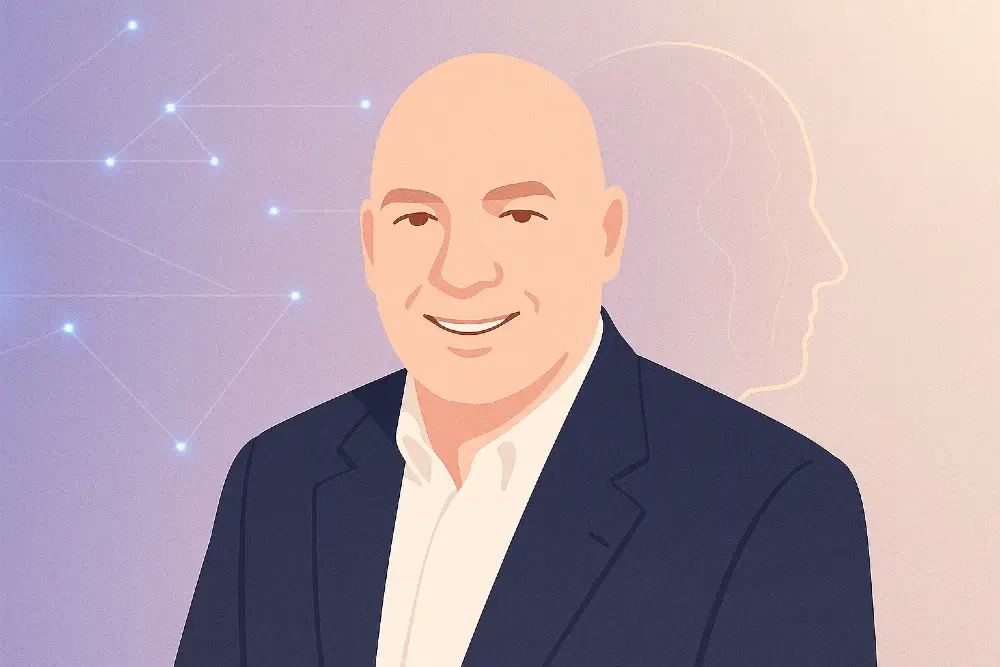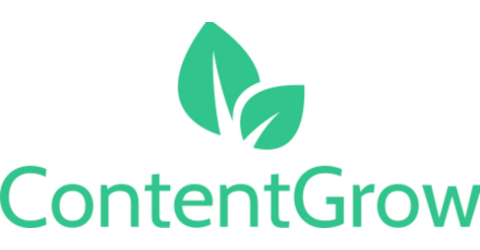Fiction writer turned AI strategist: "You should never completely outsource your brain to AI"
Sally Slater's systematic AI workflows help law firms and consultancies scale expertise without losing human judgment.

Sally Slater represents an unusual trajectory in the marketing world. A bestselling fantasy novelist turned AI marketing strategist, she recently co-founded InnovAItion Partners, an AI-native consulting firm focused exclusively on professional services firms.
Her background spans content strategy, full-stack marketing, and innovation leadership at The Bliss Group, a full-service marketing communications agency, where she served as Executive Vice President and Head of Innovation for over four years before launching her own venture. She continues as an advisor to Bliss on their AI adoption journey.
InnovAItion Partners combines deep professional services experience with AI technical expertise and marketing strategy. She co-founded the firm with Guy Alvarez, former CEO of Good2bSocial who brings a track record of scaling marketing agencies for professional services. The newly launched firm offers advisory services, marketing execution powered by proprietary AI assistants, and sector-specific training programs, all focused on bridging the gap between cutting-edge AI technology and how professional services firms actually work.
In this interview, Sally discusses her systematic approach to AI adoption, why most AI solutions fail professional services marketers, and her philosophy that human judgment remains essential even in AI-first operations.
Short on time?
Here’s a table of contents for quick access:
- From skepticism to systematic implementation
- Building sophisticated AI workflows with narrative structure
- Managing expectations while maximizing AI potential
- Professional services require specialized approaches
From skepticism to systematic implementation
Sally's first encounter with AI for marketing work came through social media content generation, an experience that immediately revealed both the technology's potential and its dangers. "I remember being absolutely gobsmacked, not because it was perfect, but because it was actually usable," she explains. "As someone who'd seen earlier AI attempts at content generation, the leap in quality was stunning."
That initial excitement quickly transformed into a more nuanced understanding when she discovered plagiarism concerns in AI-generated content. The experience sparked immediate conversations about ethical obligations and implementation guardrails. "Because while it would've been easy to just let AI write everything, we recognized early that responsible implementation was crucial," she notes.
This early skepticism became a strategic advantage, pushing Sally to develop systematic frameworks that balance automation with human oversight rather than pursuing maximum efficiency at all costs. While human-AI collaboration has become the accepted standard across marketing, Sally's approach provides specific operational guidance for how to structure that partnership effectively.

At InnovAItion Partners, Sally implements what she calls an "AI-first philosophy" that deliberately reserves space for human judgment. "My rule of thumb is that up to 80% of strategy or content generation can be automated, with 20% remaining human," she explains. "Usually that breaks down to 10/80/10: human input upfront, AI execution, then human validation and editing at the end."
This framework stems from her experience building AI workflows at The Bliss Group, where client requirements often dictated varying levels of AI usage. Rather than treating these constraints as limitations, Sally built flexibility into workflows to accommodate different comfort levels while maintaining quality standards.
However, Sally maintains a realistic perspective on AI's current limitations. "Quantitative research and math still aren't where they need to be. Even the best models are only about 85% accurate," she notes. "Link validation, despite all the automated checks we can build, still needs human eyes. And most importantly, you should never completely outsource your brain to AI. That's a death knell for new ideas and creativity."
Building sophisticated AI workflows with narrative structure
At InnovAItion Partners, Sally maintains what she calls an "AI operating system" that spans multiple specialized tools rather than relying on a single platform. The foundation includes access to all major foundation models, while the company uses Suits.ai as their primary workflow platform. "Bliss was an early design partner of Suits.ai, and InnovAItion Partners serves as their implementation partner," Sally explains.
The system extends beyond content generation to include custom integrations through tools like Lovable, Make, and n8n, plus specialized outputs through Gamma for presentations and Heygen for video. This multi-tool approach reflects Sally's philosophy that effective AI implementation requires matching specific tools to specific use cases rather than forcing everything through a single solution.

This technical foundation enables Sally's distinctive approach to AI workflows, where her fiction writing background influences prompt engineering in unexpected ways. Most of her content generation workflows begin with instructing AI to create detailed outlines before moving to full content creation. "I provide detailed guidance about what good outlines look like for different content types and narrative structures," she explains.
She's built comprehensive content systems that account for multiple narrative frameworks, including problem/solution, case study, and myth/fact structures. Each framework has specific structural guidance embedded into the prompts, ensuring consistency across different content types while maintaining strategic messaging.
Her LinkedIn carousel generator showcases this approach, incorporating various narrative structures while addressing what she calls "AI writing red flags." Sally has developed what she describes as "a novel-length system of validators to catch those telltale AI patterns." This sophisticated editing system goes far beyond basic grammar checks, targeting the specific linguistic markers that reveal AI-generated content.
Rather than trying to prevent these issues upfront through restrictive prompts, Sally employs separate editing agents to refine content after generation. "I've found that editing for those red flags after content is generated tends to work better than when you try to put restrictions on AI upfront," she notes. Most of her workflows include a drafting agent and multiple specialized editing agents, each focused on different aspects of content quality.
This multi-agent approach reflects her broader philosophy about AI implementation: systems work better when they mirror the complexity of human thought processes rather than trying to compress everything into a single, perfect prompt.
Managing expectations while maximizing AI potential

Rather than focusing solely on efficiency gains, Sally challenges marketers to consider entirely new possibilities enabled by AI. "Don't just think about automating what you already do. Ask yourself: are there better outputs I could create by reimagining the process from scratch?" she suggests. "What entirely new things are possible now? What ambitious ideas have I dismissed before that are now within reach?"
Her team has built workflows that transform single subject matter expert interviews into comprehensive content strategies spanning multiple formats and buyer journey stages. "It analyzes the transcript, combines it with SEO research and audience insights, and generates a content calendar that maps to each stage of the buyer's journey," Sally explains.
Another practical system tackles prospect qualification by analyzing inbound inquiries, scoring them against sales criteria, and suggesting personalized icebreakers for follow-up emails. "It's not replacing human judgment in sales, but it's making the process more efficient and informed," Sally notes. These examples illustrate her broader point about AI enabling capabilities that weren't previously feasible rather than simply making existing processes faster.

These sophisticated technical foundations enable Sally to tackle bigger strategic questions about AI's potential in professional services. Sally emphasizes that successful implementation requires managing team expectations properly. "There's a widespread misperception that AI should deliver perfect results immediately. When it doesn't, people get frustrated and write it off entirely," she observes.
Instead, she advocates treating AI like an entry-level associate. "When you give someone their first assignment, you don't expect perfection. You expect to provide guidance and work with them to iterate." This reframing helps teams develop more realistic expectations while building confidence through what Sally calls "slam-dunk use cases that demonstrate clear value."
The approach addresses what IBM research identifies as the biggest barriers to AI adoption: limited AI skills and expertise (33%), data complexity (25%), and ethical concerns (23%). By starting with manageable use cases and building expertise gradually, teams can overcome technical knowledge gaps while demonstrating clear value.
Sally's philosophy extends to content creation, where she takes what she calls a "somewhat controversial" stance on AI-generated writing. "I don't have a problem with using AI to write something end-to-end as long as the input includes human insight," she explains. "I'm less precious about the actual writing process than I am about ensuring original thinking drives the content."
Professional services require specialized approaches
Unlike product-based industries where AI adoption often centers on customer behavior prediction, professional services firms face unique constraints around compliance, confidentiality, and brand reputation. "Most AI solutions don't actually work for professional services marketers," Sally notes, explaining why InnovAItion Partners focuses exclusively on this sector. Standard AI marketing tools often ignore the reality that automated content publishing would "get laughed out of the room" by compliance teams at law firms or accounting practices.
The approach becomes particularly relevant for professional services firms that need to navigate compliance requirements while scaling content and business development activities. Most generic AI marketing tools ignore these sector-specific constraints, creating gaps that Sally's specialized approach addresses directly.
This perspective becomes particularly relevant as AI marketing market research shows unprecedented growth, valued at US$47.32 billion in 2025 and projected to hit US$107.5 billion by 2028. Success increasingly depends on using AI to unlock new strategic possibilities rather than simply automating current workflows.
For professional services firms specifically, Sally argues that AI's greatest value lies in scaling human expertise across formats and channels while maintaining the specialized knowledge that defines these industries. "No matter the use case, human expertise and insight are there as the foundation, but AI helps us scale it across formats and channels," she emphasizes.





